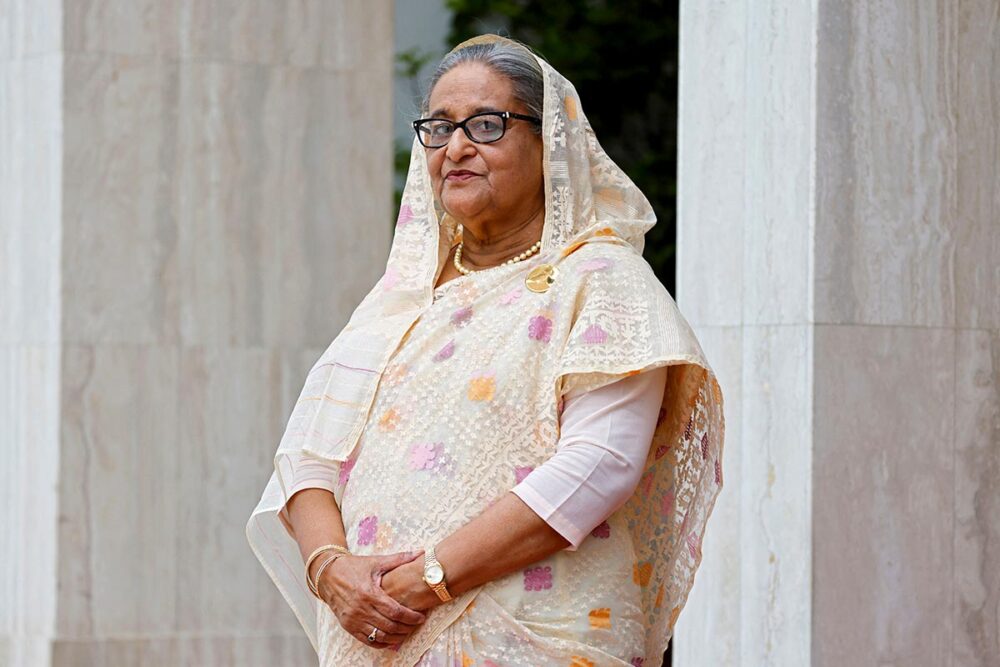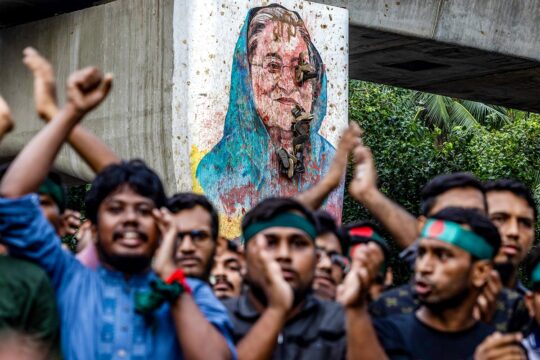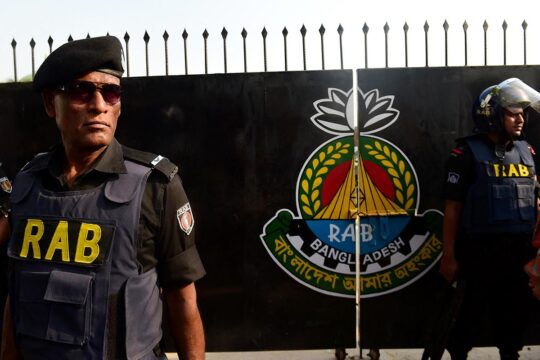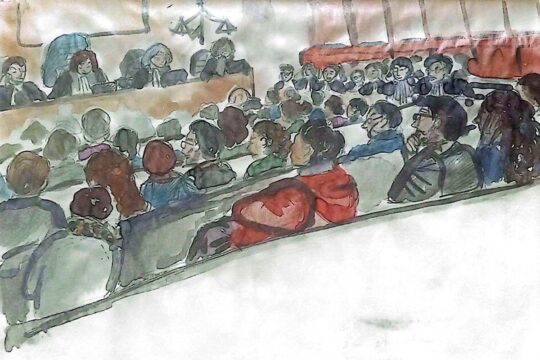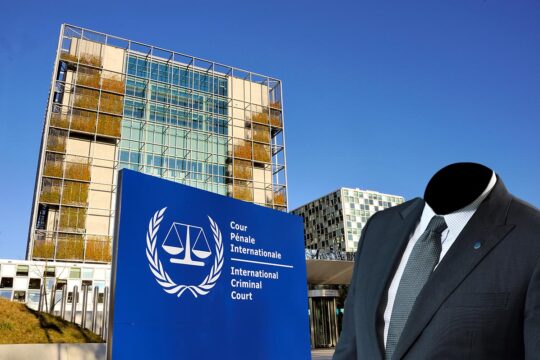“Sheikh Hasina is the nucleus and the life-force of the crime, and her crime surpasses that of every criminal on earth. Therefore, this life-force must be punished, and the nucleus must be destroyed. Hence, I request the maximum penalty under the law,” Tajul Islam, the chief prosecutor told Bangladesh’s International Crimes Tribunal (ICT) in his closing statement on October 16, 2025.
Islam, who led the prosecution, also asked the court to impose a similar sentence on the former Home Minister, Asaduzzaman Khan Kamal who he said was “equally guilty”. “The decisions regarding the deployment and instructions for the police and other law enforcement agencies were primarily made during meetings held each evening at the residence of Asaduzzaman Khan the former Home Minister and president of the core committee,” Islam said.
The trial for crimes against humanity took place in the absence of the two main accused – whom are both believed to be on the run in India.
Their state appointed defence lawyer told the court, on October 21, that his two clients were innocent and should be acquitted. “It is claimed, there was an order, facilitation, assistance, complicity, and conspiracy, by my clients, through which crimes against humanity were committed, which were knowingly carried out with their knowledge,” Amir Hossain stated. “This is the primary allegation. I am denying all these. No such offense was committed by my clients.”
Regarding the sole defendant present at the trial, the former inspector general of police Chowdhury Abdullah Al Mamun, who had pleaded guilty and gave evidence against his co-accused, the chief prosecutor suggested a more lenient sentence. “If the court believes that he has provided truth and full disclosure, [it] may deliver a verdict as it deems fit,” he indicated.
Widespread and systematic attack against protesters
The prosecution alleged that the three men has committed five offences of crimes against humanity.
The first centred on remarks made by the prime minister on 14 July 2024, before any killing had taken place, depicting the protesters as relatives of “Razakars” (named after the pro-Pakistan collaborators during the 1971 Bangladesh war of independence ), which incited to attack them. The second involved the planning and use of lethal weapons, drones, and helicopters to kill protesters. The third involved the killing of the student Abu Sayeed at Rangpur university in the North of the country on the 16 July. The forth concerned the killing in the morning of 5 August of six men in Chankerpur in the capital city of Dhaka. And the fifth involved the killing on the same day of another six men in Ashulia, just outside Dhaka, and the subsequent burning of their bodies.
The prosecution argued that each of these incidents were part of a “widespread and systematic” attack “directed against a civilian population.” As evidence of the “widespread” nature of the attack, Islam pointed to the large number of people who were killed, as many as 1.400 estimated by a United Nations Fact Finding Report, and how the killings took place throughout Bangladesh. It also argued that the attack carried out was “systematic” as it involved “the same group of perpetrators” who conducted “similar” attacks using the same kind of weapons and ammunition, with the authorities “denying medical treatment” to injured victims.
“The prosecution witnesses have consistently deposed that the armed members of the Awami League, Jubo League, and Chhatra League [the youth and student wings of the Awami League] were involved together with the police in carrying out the attacks against students and civilians,” Islam told the court. This “demonstrates the organized nature of the acts of violence and an identifiable pattern of the commission of crime. Moreover, the fact that the law enforcement agencies and the members of the ruling party worked together in attacking the civilian population is a strong indicator of a coordinated and organized effort. This was not a random and spontaneous act of violence by one group, but a joint operation by state forces and a political party and its student wing, suggesting a planned policy of violence against the protester
Order to use lethal weapons
The testimony given to the ICT on September 2, by the former inspector general of police was significant for the prosecution.
Chowdhury Abdullah Al Mamun told the court that on July 18th 2024, “Home Minister Asaduzzaman Khan Kamal called me and informed me that prime minister Sheikh Hasina had instructed the direct use of lethal weapons to suppress the movement. At that time, I was present at the police headquarters, and DIG [deputy inspector general] Proloy Joarder was present in front of me. When I informed Proloy Joarder of the prime minister’s instruction, he left my room and conveyed this instruction to the DMP [Dhaka Metropolitan Police] and nationwide.” He went onto say that “the use of lethal weapons began on that day.”
The former head of the Bangladesh police went onto admit that “Countless students and members of the public were injured and killed during the movement by the use of drones, helicopters, and lethal weapons. In addition to the Awami League’s political forces, Awami League-aligned intellectuals, journalists, cultural workers, and businessmen encouraged the government to suppress the movement.”
At the end of his testimony, Mamum explained why he had given his evidence: “As the police chief, I am ashamed, remorseful, and apologetic for the excessive use of force against the protesters, which resulted in their injuries and deaths, carried out under the government’s order.”
Some incidents may have happened
State appointed defence lawyer Hossain questioned the basis of the prosecution case. “When the prosecution says ‘widespread’ it should mean the entire Bangladesh,” he told the court. “If it were really widespread, there should have been at least two witnesses per district, and their testimonies should have been corroborated. Therefore, it cannot be called widespread.” He also argued that the videos of people being shot, shown to the court by the prosecutors were “AI generated.”
He questioned the credibility of the evidence given by the former inspector general of police. “He placed the blame on others to conceal his own faults. Everything he said was his own version,” the lawyer said. Hossain also claimed that the magistrate to whom Mamun gave the confessional statement “never explained to him the legal consequences” of giving it.
Hossain said drones were used to “see in which areas the crowd was larger, where they could damage more state property, cause more loss of life and property.” “For controlling an ongoing movement, if drones are used, it doesn’t mean that the drones were used for shooting. It doesn’t mean that bombs were dropped from the drones on the people, on the protestors. Not that.”
He however acknowledged “some people did die.” In trying to control the movement, “some incidents may have happened. It is not right to think that those incidents happened on the instructions of Sheikh Hasina and Asaduzzaman Kamal.” The lawyer also pointed out that Hasina did take steps to investigate those deaths, setting up an investigative commission.
“My statement is that Sheikh Hasina, being in the superior status, did not conspire, did not plan to conspire, and did not directly give any instructions, as a result of which, the widespread, systematic use of lethal weapons, murder, attempted murder, torture, inhumane acts, and other inhumane acts of crime against humanity have been committed.”
After the defence lawyer made his submissions, the Bangladesh attorney general Md. Asaduzzaman addressed the court. “If we cannot ensure justice, the people of Bangladesh will remain cowardly and spineless in the ruins of history,” he said, adding that he expected “the maximum punishment.”
On November 13, the court will announce the date on which it will give its judgement.


